A Beginner's Guide | How to Install Hard Drive in PC?
You may want to install a new hard drive on your desktop or laptop because the old one malfunctioned or just because you want to extend the size of your local storage. Whichever the case, it's important to know how to install hard drive in PC so that you can do it on your own and not rely on hiring technicians.
Installing a hard drive is very simple, provided you take note of all the steps. This guide will teach you how to install hard drive in a desktop and a laptop. Read on to learn how both methods work.
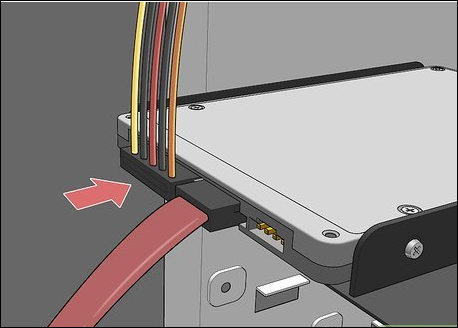
Preparations for Installing Hard Drive in PC
The first thing to consider is whether installing a hard drive on your PC is possible. In the case of an all-in-one PC monitor, you need to check whether the hard drive is replaceable. Check if your desktop has an expansion slot if you want to install a second hard drive. There's no need to proceed with purchasing a new hard drive if your desktop or laptop doesn't meet these basic requirements.
Next, you should have the following tools with you:
- Screwdriver
- Mounting screws
- A new HDD/SSD
- SATA cable
- SATA power cable adapter (if the power supply lacks open SATA slots)
- Static-free work area
The next preparation you need to make is to keep a backup of the data on your old hard drive. The best way to do this is using a backup software called Qiling Backup. This tool is free to use and easy to get started with. It allows you to back up different files, including photos, audio, documents, settings, and program files.
Backing up files using Qiling Backup is very secure and allows you to recover the saved data whenever you need it. You can save your files to a shared network location, the cloud, or a USB drive. Below are additional features of Qiling Backup:
- System backup and recovery- Qiling Backup allows you to save your boot partitions and program files and recover them when your current system fails or experiences a malware attack.
- Support Windows 10 clone hard drive which allows you to make an exact copy of your old hard drive and transfer files to the new hard drive.
- Security zone backup- the software allows you to create a secured backup free from ransomware or malware attack.
- Hot backup- Qiling Backup allows you to back up files while still in use.
- WinPE bootable disk - as an efficient backup solution, Qiling Backup allows you to create an emergency USB disk for use when your Windows system isn't booting.
To back up your hard drive using Qiling Backup, you'll need to download and install the free version of the software on your computer. Please follow the next steps to back up your hard drive before installing the hard drive in PC:
Step 1. Start with selecting the Disk backup button.
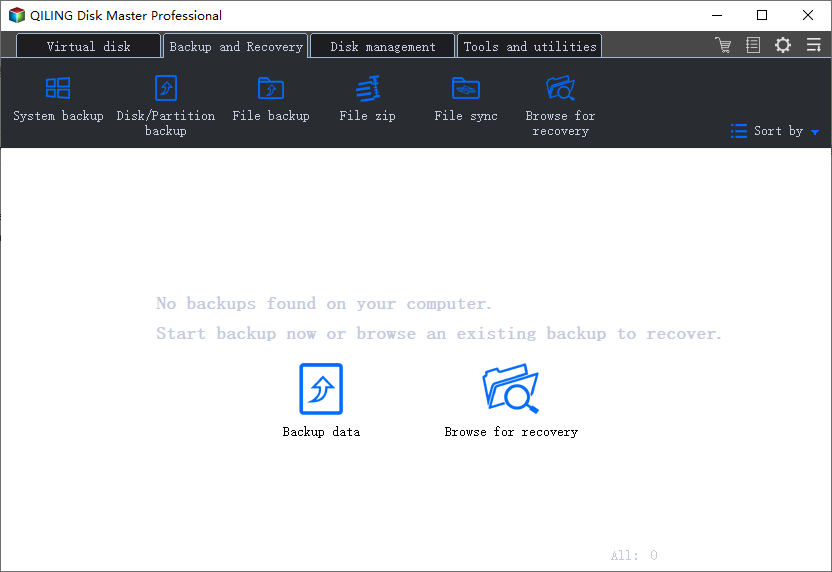
Step 2. It is available to back up a whole disk or a certain partition. Choose the one you need.
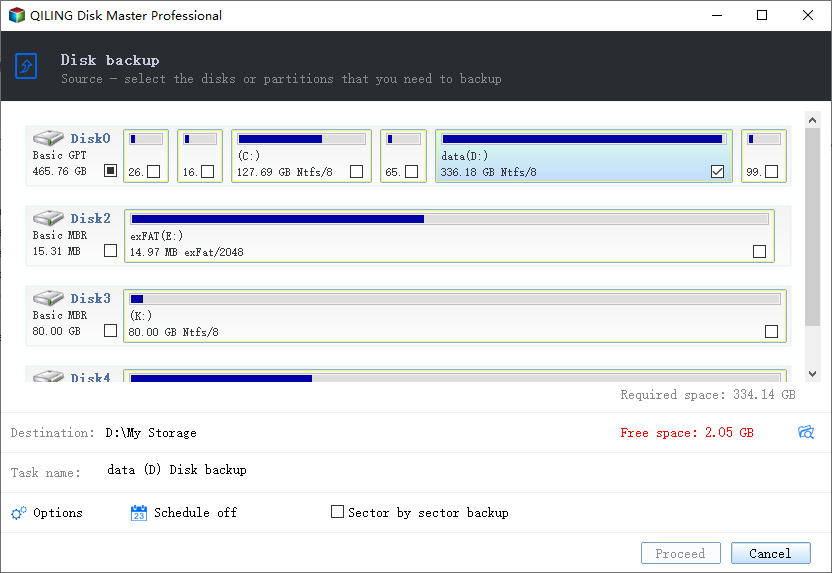
Step 3. Select the destination where you want to save the backup.
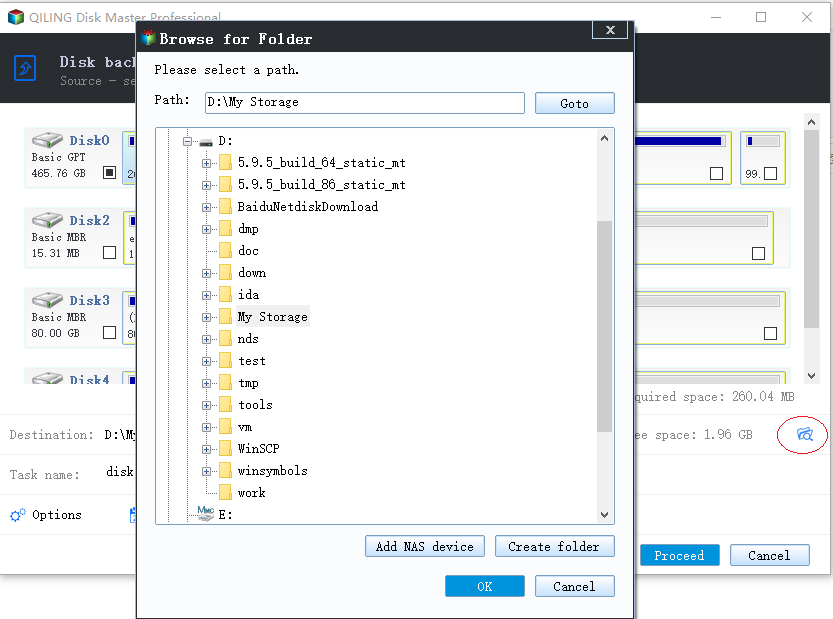
Step 4. For disk/partition backup, you can choose to save the backup to local drive or to NAS.
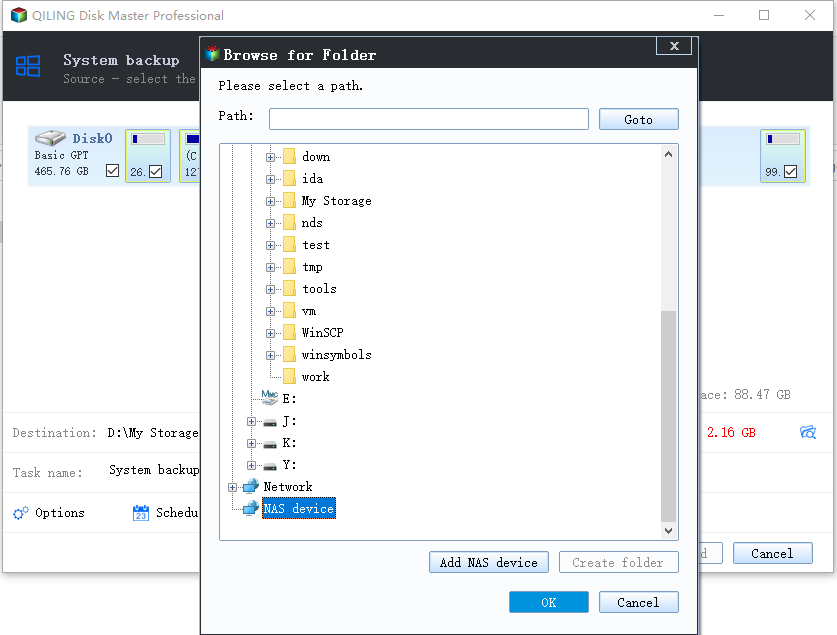
Step 5. After the backup process is completed, your task will be displayed at the left. Click "Advanced" button of the task, you can further manage your backup such as recover it, create incremental backup, etc.
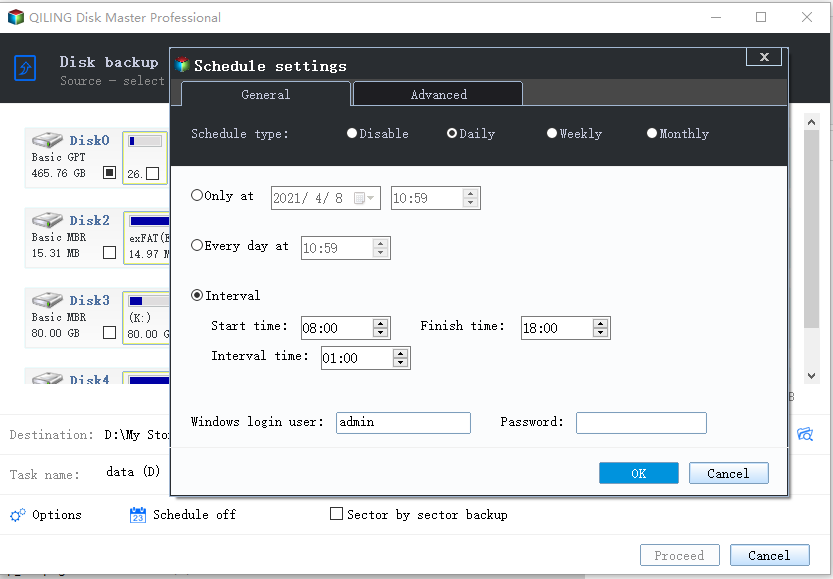
How to Install Hard Drive on Desktop
After you've saved your files and have all the tools with you, you can learn how to install hard drive on desktop using the following steps:
Step 1. Shut down your desktop.
Step 2. Unscrew the back casing of your computer's system unit and remove it. You'll need a screwdriver to achieve this.
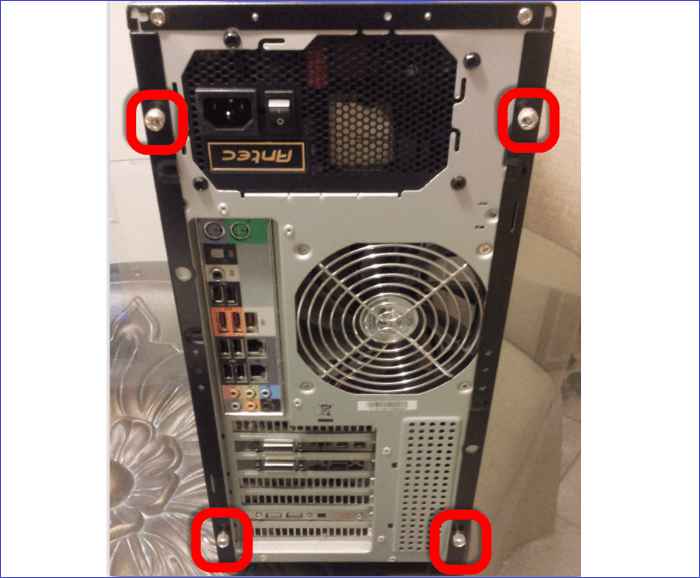
Step 3. Ground yourself to safeguard the internal components of your desktop computer from damage by electrostatic shock. One way to ground yourself is by wearing a static wristband.
Step 4. Remove the old hard drive from your computer. Ensure you disconnect all the cables from your hard drive, including the power supply. You must also unscrew your hard drive to disconnect it from its enclosure.
Step 5. Once you've removed the old hard drive, pull it out of its enclosure (if it has one). Next, transfer the enclosure to your new hard drive.
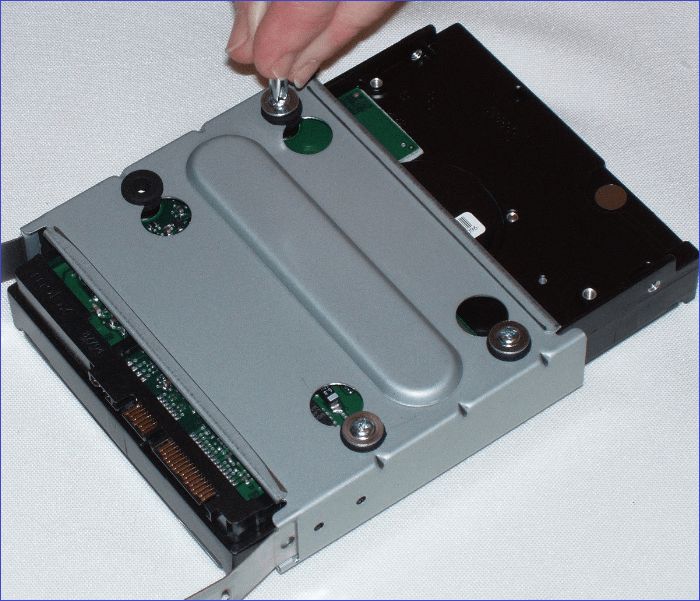
Step 6. Hold the new hard drive and insert it into the slot you removed the old hard drive from.
Step 7. Once you've securely inserted the hard drive, hold it in place using the screws provided. The screws ensure that the hard drive isn't loose while your computer is in use.
Step 8. Connect the hard drive to one end of the SATA cable.
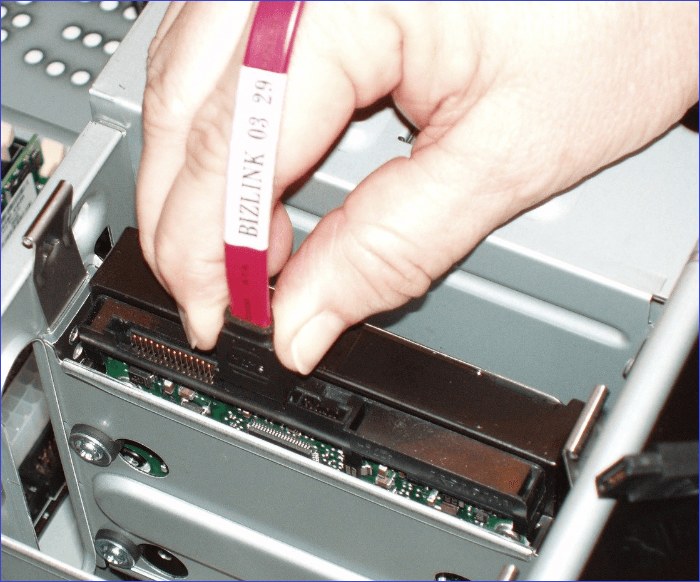
Step 9. Connect the other end of the SATA cable to your computer's motherboard.
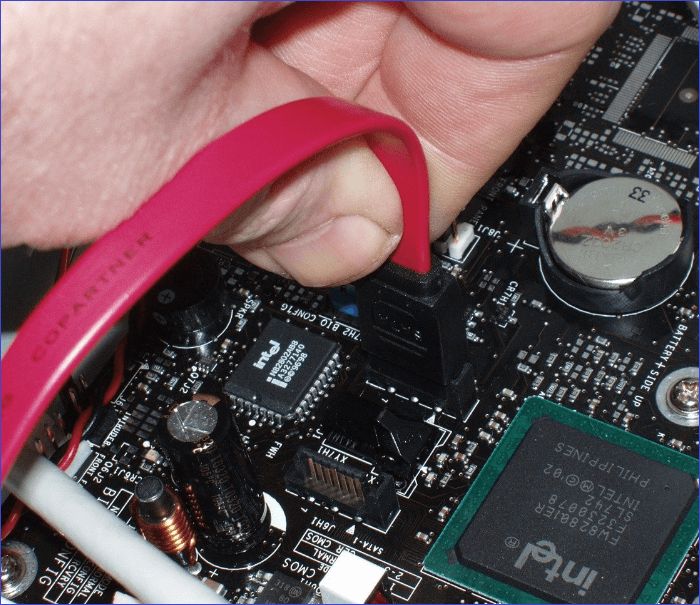
Step 10. Connect your hard drive to a power supply using a SATA power connector.
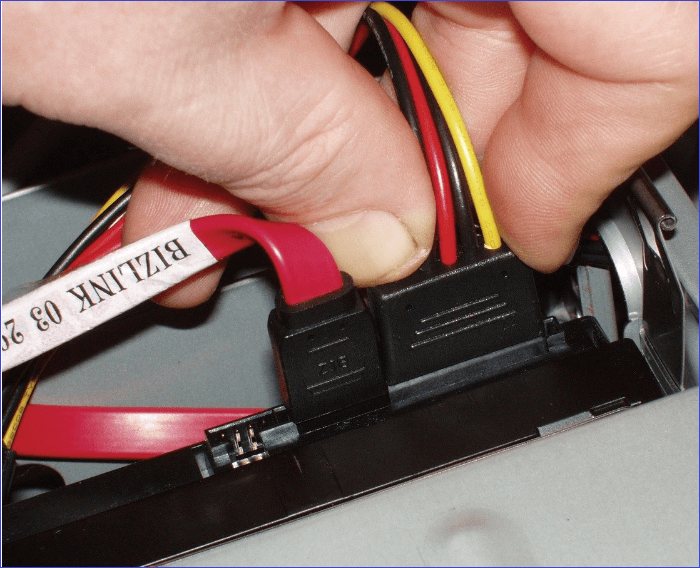
Step 11. Close your computer by screwing back the casing.
Step 12. Plug in your computer and turn it on. Check whether the new hard drive spins up. If you hear any beeping sound, turn off the computer promptly and check for any inappropriate connections.
Step 13. Once you've confirmed that the new hard drive works well, you can begin the process of installing an operating system so that you use your computer.
How to Install Hard Drive on Laptop
As with the desktop computer, you'll also need to back up the files on your laptop with Qiling Backup before installing another hard drive. Once you have all the tools ready, you can learn how to install hard drive on laptop using the following steps:
Step 1. Turn off your laptop.
Step 2. Shut the lid and flip over the laptop.
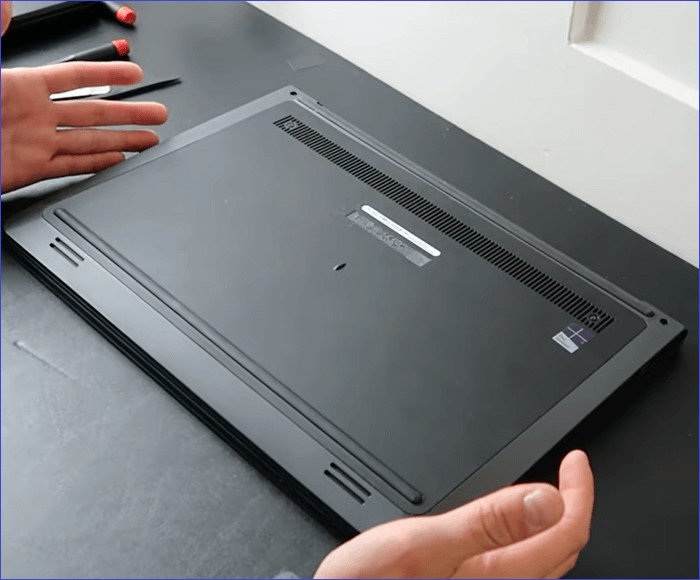
Step 3. Remove the laptop's back casing. Be sure to remove the casing carefully, so you don't damage anything. Sometimes, you can do this using a screwdriver, depending on the brand of your laptop.
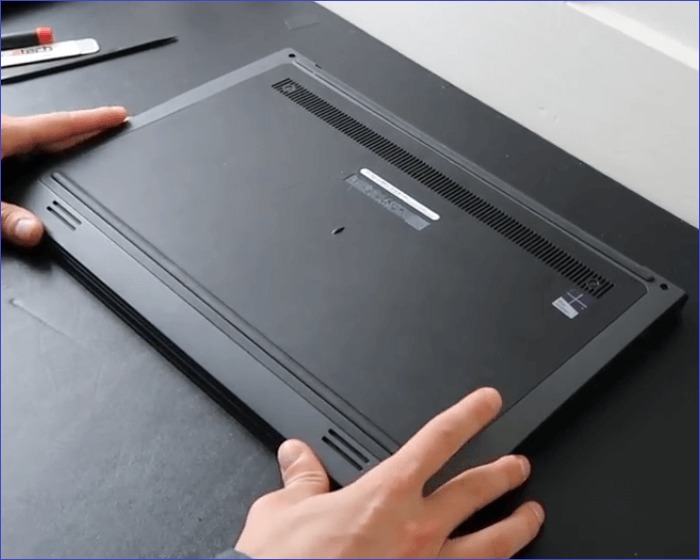
Step 4. Ground your hands using a static wristband or touching a metal surface to ensure you don't carry any static charges that could damage the inner parts of your laptop.
Step 5. Disconnect your laptop's battery. This protects against any electric shock when installing the new hard drive.
Step 6. If your hard drive is housed inside a panel, you'll need first to remove the panel before you can access the drive.
Step 7. Next, unscrew the hard drive. To remove the hard drive, slide it out from the attached connection.
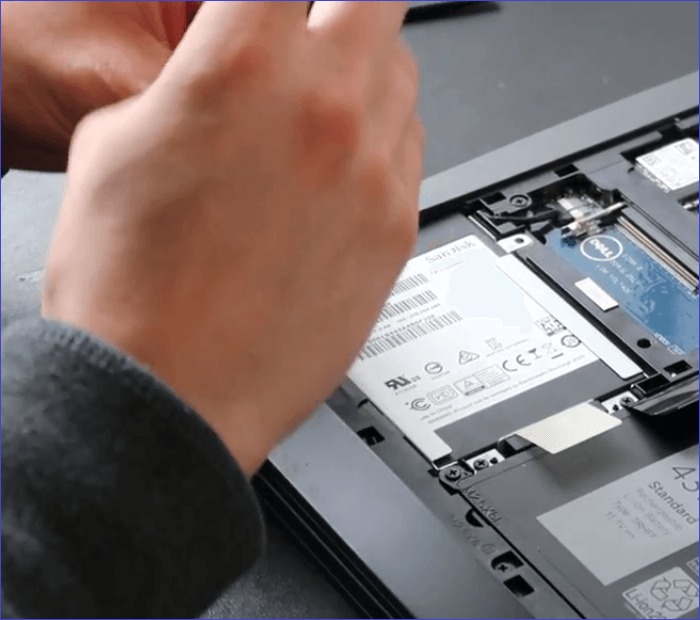
Step 8. If the old drive has an enclosure, transfer it to the new drive. Secure the new hard drive with screws after placing it on the enclosure.
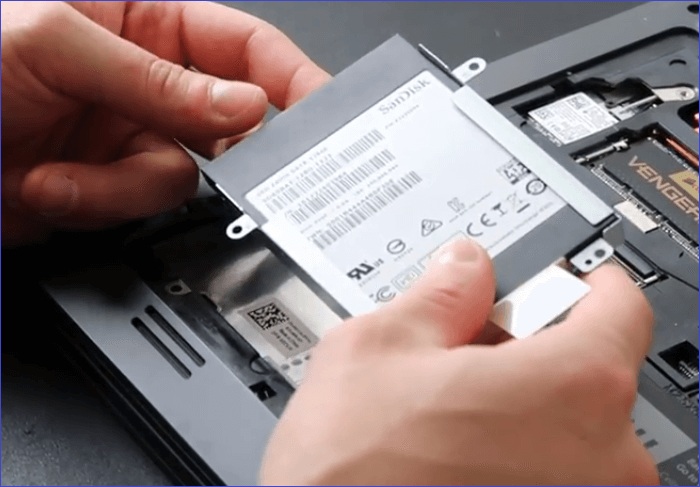
Step 9. Insert the new hard drive onto your laptop. Ensure the correct side faces upwards, then firmly press the hard drive into the connector.
Step 10. Connect all the cables that you had detached from the old hard drive.
Step 11. Put back your laptop casing and hold it up with screws if it has any.
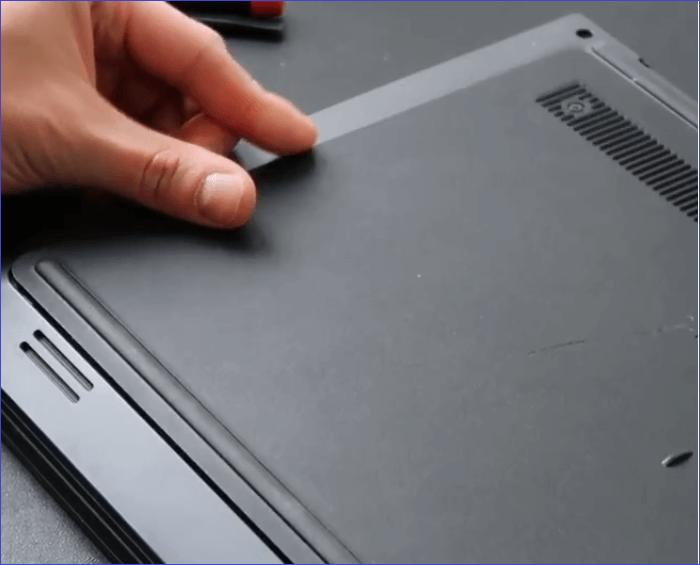
Step 12. Install an operating system to start using your new hard drive.
To Install Hard Drive in PC FAQs
Below are the commonly asked questions about installing a hard drive on a PC.
1. Where Is the Hard Drive in a Computer?
You'll find the hard drive in the system unit for a desktop. You'll need to unscrew the casing to access your hard drive. If using a laptop, you'll find the hard drive beneath the casing after flipping over your laptop. You'll need to unscrew the casing and remove the panel covering your hard drive to access the hard drive. The panel has a hard drive logo printed on it.
2. How to Install a Hard Drive in a Gaming PC?
You can achieve this through the following steps:
Step 1. Turn off your gaming PC and remove its back casing.
Step 2. Mount the hard drive in its appropriate location. Ensure you do this carefully so that you don't damage anything.
Step 3. Connect the mounted hard drive to a SATA cable and a power cable.
Step 4. Next, connect the SATA cable to the motherboard.
Step 5. Connect your hard drive to a power supply using a SATA power connector.
Step 6. Close your gaming PC by screwing back the casing and then turning it on.
3. How Do I Install a New Drive in Windows 10?
You can do this using the following steps:
Step 1. Go to File Explorer and right-click "This PC". Next, select "Manage".
Step 2. Navigate to "Disk Management" and right-click your new drive.
Step 3. Next, select "Initialize Disk".
Step 4. Select the disk you want to initialize, i.e., the new drive, and then choose whether you want to partition it as MBR or GPT.
4. How to Install SATA Hard Drive in PC?
Once you've turned off your PC and opened the casing, connect one end of the SATA cable to the hard drive while the other end of the port connects to the motherboard. Next, use a SATA power connector to connect your hard drive to a power supply. Close the casing and then turn on your PC.
Final Verdict
This guide has taught us that it's important to first back up files before installing a hard drive on a desktop or laptop. One software that you can use to securely back up and restore files is Qiling Backup. This tool has a free version that is easy to download and use.
The tools you may require when installing a hard drive in a PC include a screwdriver, mounting screws, a new hard disk, a SATA cable, and a SATA power cable adapter. To install a new hard drive on a desktop, you'll need to open the back casing and remove the old hard drive. You'll then need to transfer the enclosure to the new hard drive before inserting it in place of the old hard drive.
To have your device working again, installing a new OS is vital. On the other hand, to install a hard disk on your laptop, you'll need to turn it off, close the lid, and flip it over. You'll then need to remove your laptop casing to access the old hard drive. Ensure you carefully remove the old hard drive and replace it with the new one. Just like a desktop, you'll also need to install a new OS for your laptop to function correctly.
Related Articles
- How Do I Format USB Drive on Linux? Linux Beginners in 2022
- Disk2vhd: Detailed Introduction to Convert Physical to Virtual Machine
- FIX 'the device has either stopped responding or is disconnected' Error
- Best Ways To Fix Windows PowerShell Keeps Popping Up